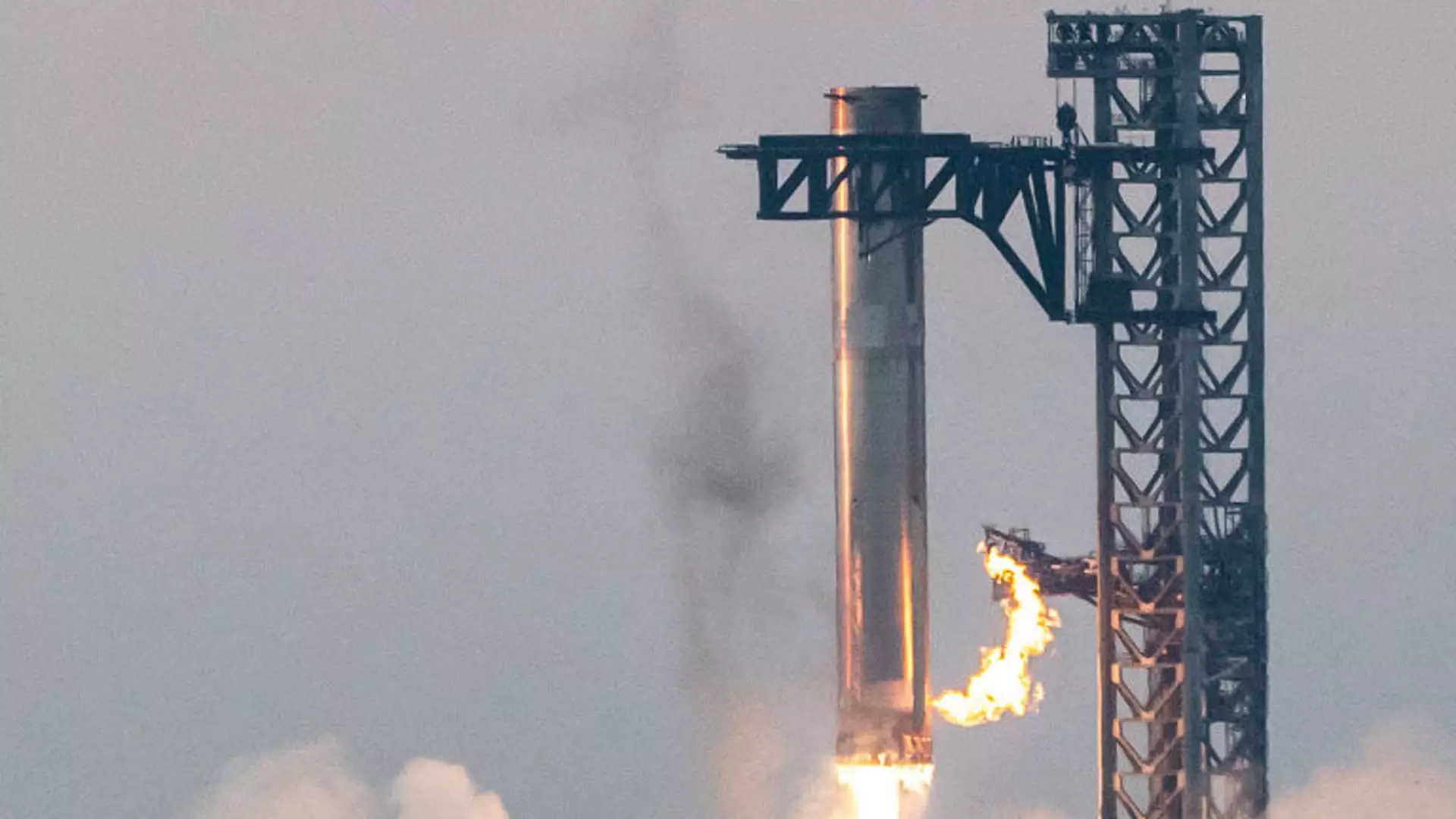Space exploration has entered a new chapter with the remarkable developments surrounding SpaceX’s Starship program. The recent fifth test flight of the Starship rocket not only highlighted the technological capabilities of the spacecraft but also set an important precedent for future space missions. The successful launch and landing of the “Super Heavy” booster marks a significant step toward establishing a fully reusable rocket system, which could redefine the economics of space travel.
On a crisp Sunday morning, SpaceX initiated the latest test flight of its Starship rocket from the Starbase facility located in Brownsville, Texas, at precisely 8:25 a.m. ET. One of the most astonishing aspects of this flight was the recovery of the 20-story booster, which successfully landed back on the arms of SpaceX’s launch tower approximately seven minutes post-launch. This event had SpaceX communications manager Dan Huot in awe, as he exclaimed, “What we just saw, that looked like magic,” during the company’s live broadcast.
This outcome is particularly noteworthy against the backdrop of the technological challenges involved in such a feat. SpaceX has invested years of research and development into perfecting the mechanisms for safely catching and landing the Super Heavy booster, recognizing the task’s complexity. The catch used a set of automated “chopstick” arms attached to the launch tower, a mechanical solution designed to enhance the reusability of the booster.
The implications of this successful recovery stretch far beyond the immediate achievement. NASA Administrator Bill Nelson extended congratulations to SpaceX, emphasizing the importance of these tests in relation to future lunar missions under the Artemis program. This partnership illustrates the evolving dynamics between private aerospace companies and government organizations, underscoring a shared ambition to explore and colonize space.
SpaceX’s commitment to relentless testing has fostered a culture of innovation and adaptability. Each test flight has achieved increasingly ambitious goals, with engineers applying lessons learned from prior missions. This iterative process is crucial not just for enhancing the Starship’s capabilities but also for ensuring the safety and reliability necessary for crewed missions in the future. SpaceX is mindful that its aspirations extend well beyond test flights—it envisions a future where Starship routinely transports cargo and people across orbital and interplanetary distances.
However, this journey has not been devoid of obstacles. The Federal Aviation Administration (FAA) had issued a launch license for the fifth flight only a day before the test, a timeline that underscores the ongoing complexities of regulatory approval in the aerospace industry. SpaceX’s challenges have compounded with environmental regulations, leading to fines over unauthorized water discharges at their Texas site. This situation prompted both the company and Elon Musk to voice concerns regarding ongoing delays attributed to environmental assessments they considered excessive.
Despite these hurdles, SpaceX has continued to press forward, demonstrating resilience in navigating the regulatory landscape to achieve its objectives. The company has underlined its commitment to environmental safety, stating, “We accept no compromises when it comes to ensuring the safety of the public and our team.” This diligence suggests an acute awareness of the fine balance between ambitious technological progression and responsible environmental stewardship.
Starship represents a transformative leap in rocket technology, standing as the tallest and most powerful rocket ever constructed. With a height of 397 feet when fully assembled, it dwarfs previous models, leveraging 33 Raptor engines capable of generating a staggering 16.7 million pounds of thrust. The unique combination of liquid oxygen and liquid methane as fuel propellants further marks a shift toward more sustainable practices in rocketry.
Looking ahead, SpaceX foresees performing hundreds of Starship missions, with future flights designed to transport astronauts to the Moon and eventually, to Mars. NASA’s selection of Starship as a lunar lander underlines the vital role this initiative plays in broader space exploration ambitions.
SpaceX’s fifth Starship test flight heralds an era characterized by innovation, collaboration, and ambition. The successful booster catch exhibited the strides made in reusability, a concept that could dramatically reduce the costs of space exploration and increase accessibility to the final frontier. As we stand at the threshold of potential interstellar travel, the ongoing achievements of SpaceX and its commitment to pushing the limitations of our understanding will undoubtedly shape the future of space exploration for generations to come.


Leave a Reply